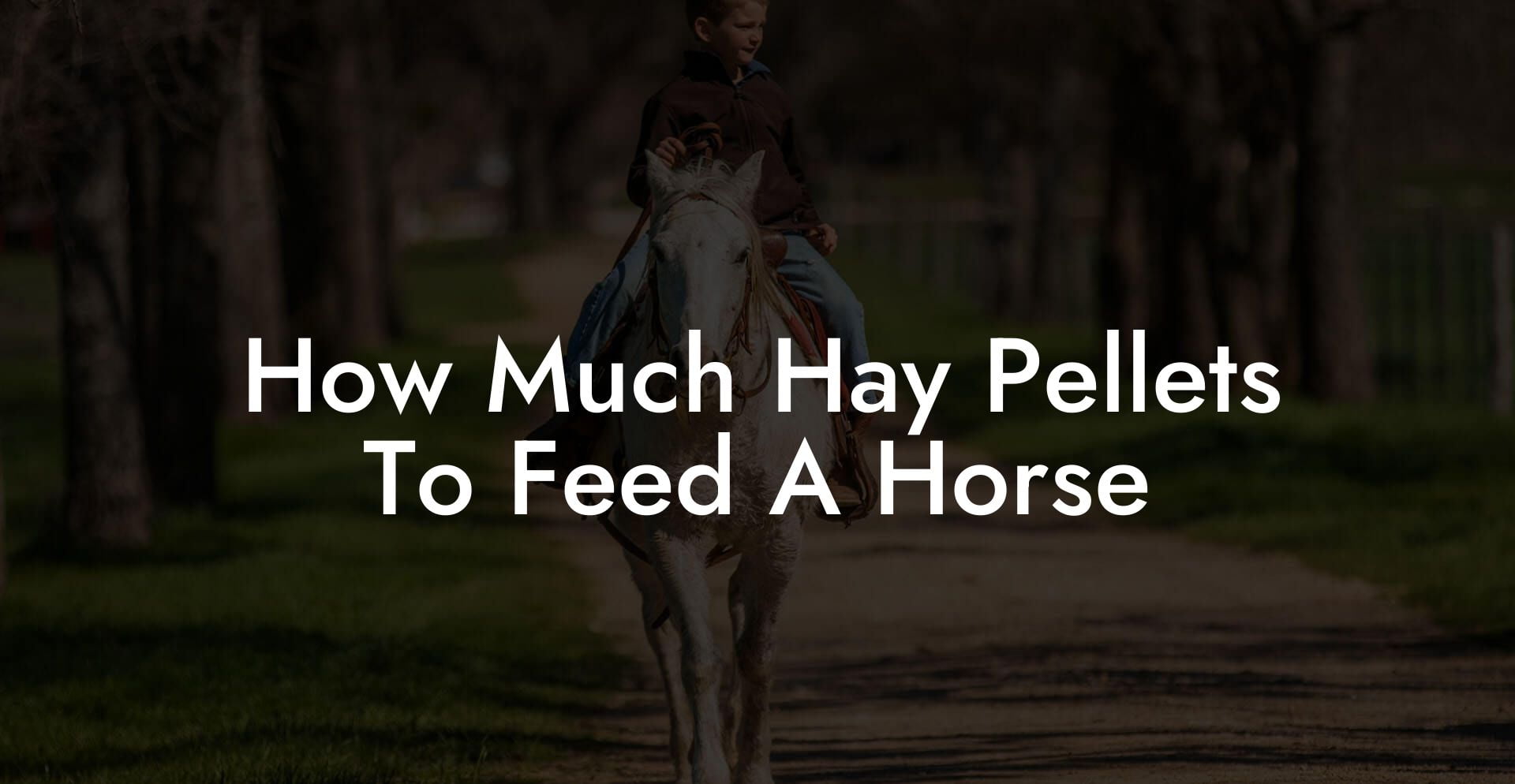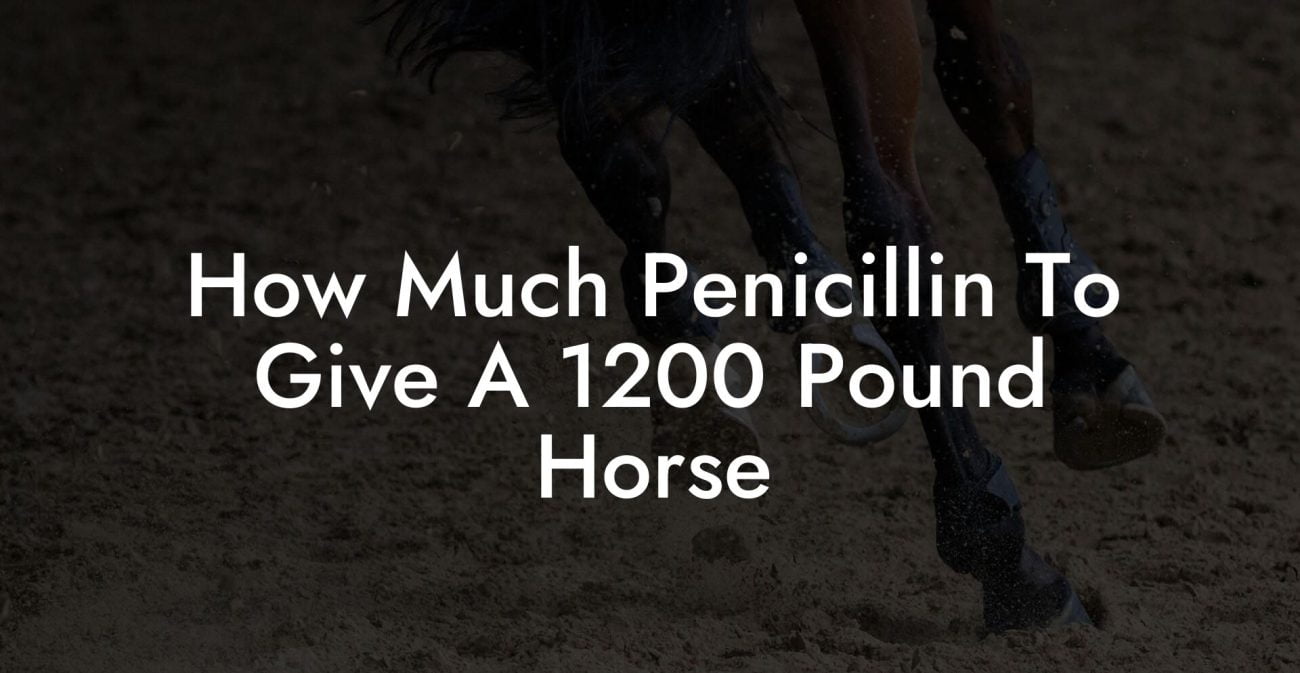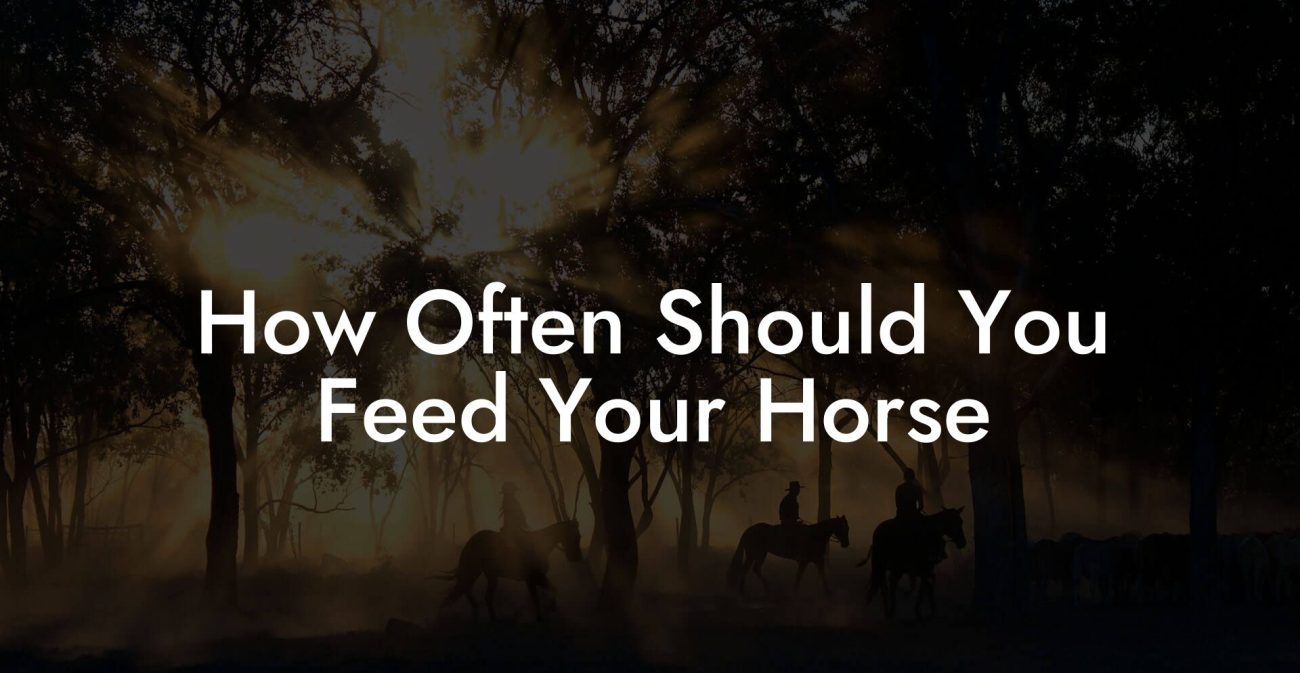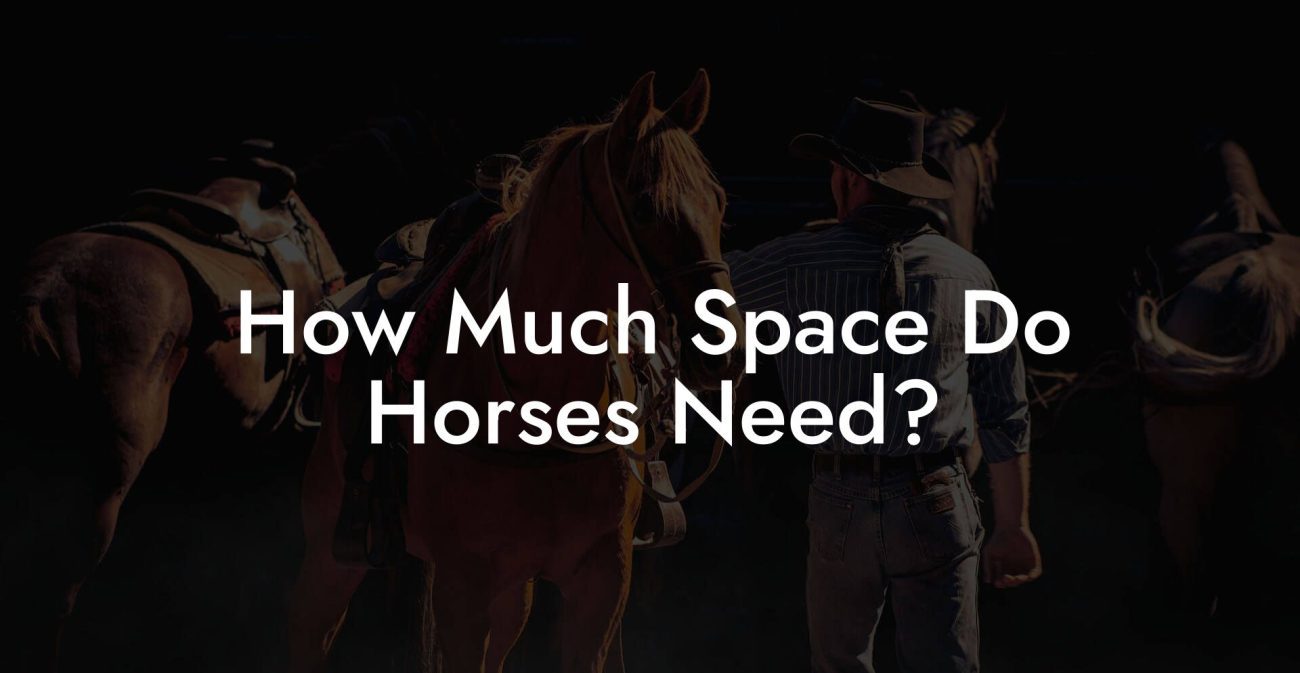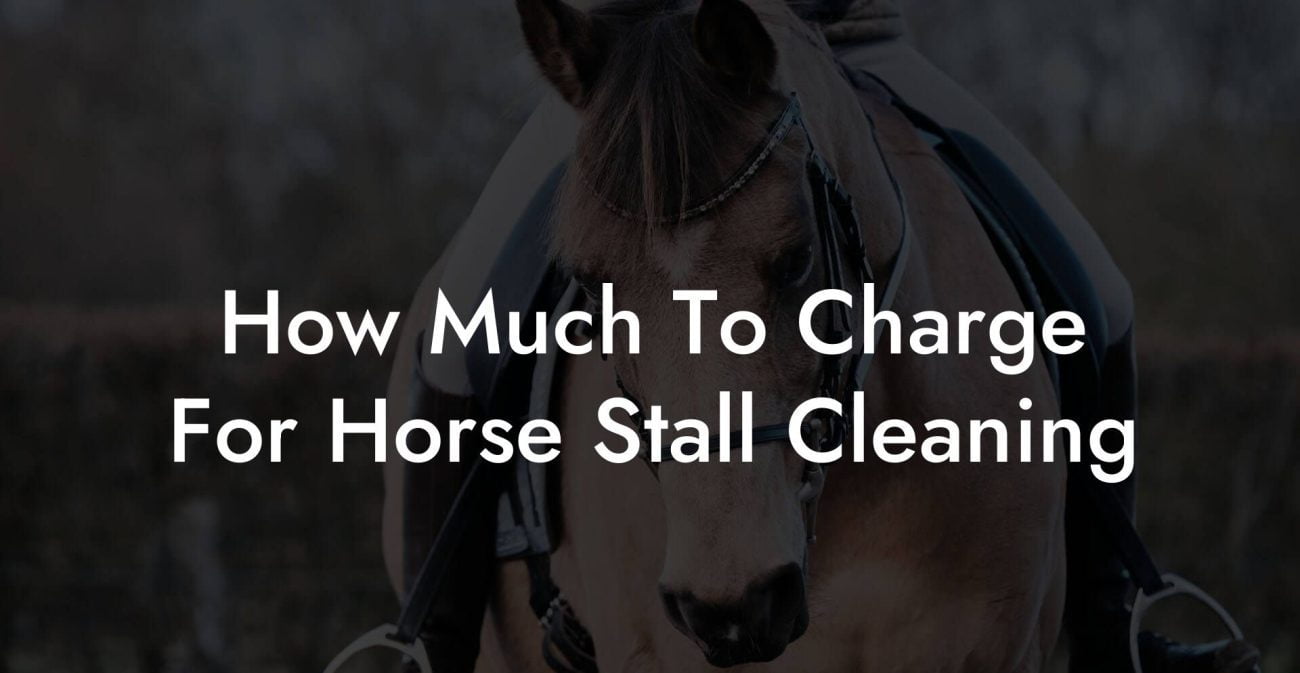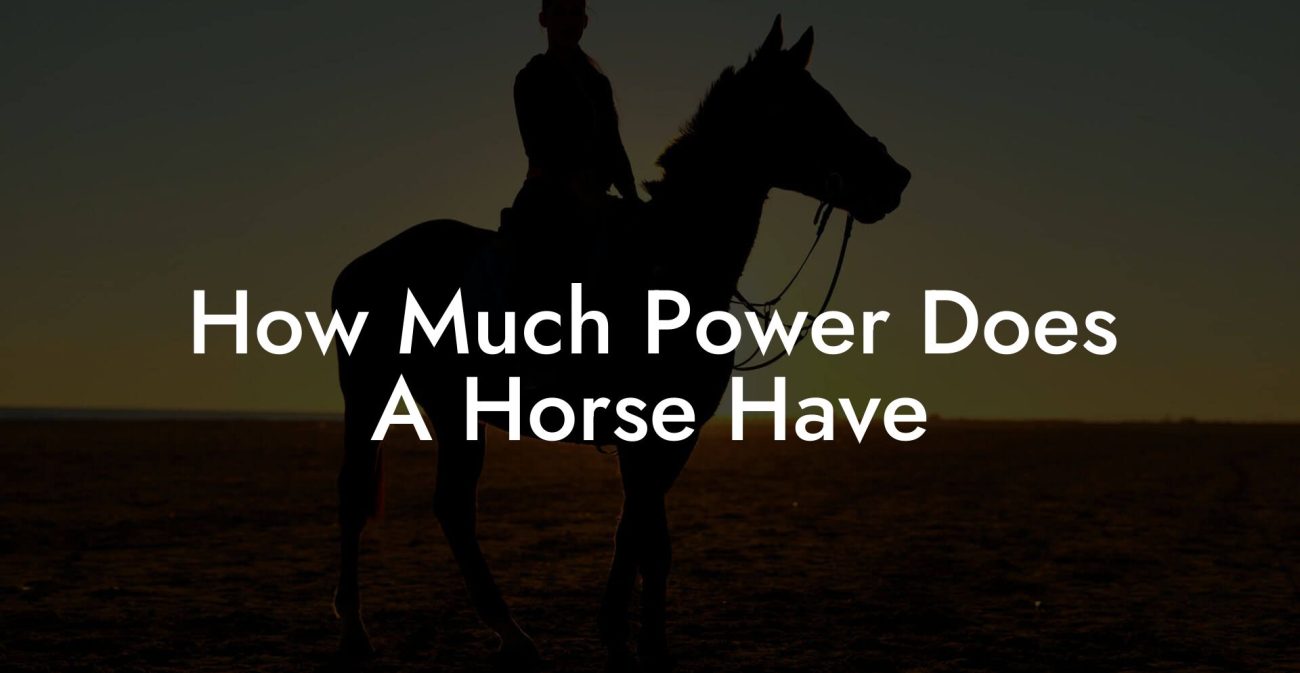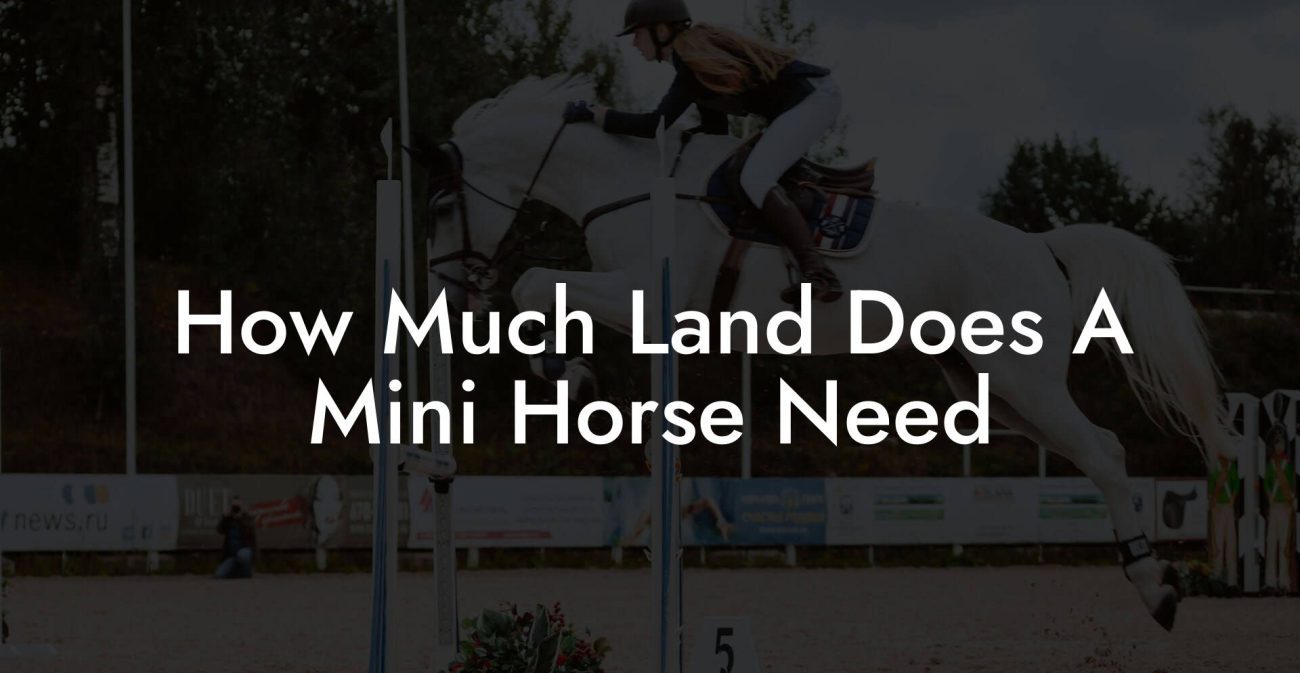Ever wondered how to transform your trusty four-legged friend into a lean, mean, hay pellet-eating machine without compromising on flavor, nutrition, or your budget? Whether you’re a Gen-Z equestrian influencer or a millennial riding into the sunset with your prized companion, knowing exactly how much hay pellets to feed your horse can be a game changer. Forget old-school boring feed guides, get ready for a fun, engaging deep dive into the whys, hows, and wow-factors of optimizing your horse’s hay pellet diet for peak performance and vitality.
Quick Links to Useful Sections
- The Scoop on Hay Pellets: What Are They and Why Do They Matter?
- Nutritional Value of Hay Pellets: Beyond Just Crunchy Bites
- Key Factors to Consider Before Feeding Hay Pellets
- How Much Hay Pellets Should You Feed Your Horse?
- Baseline Calculation
- Adjusting for Activity Levels
- Combining Feeds for Balance
- Transitioning to Hay Pellets: A Step-by-Step Guide
- Step 1: Gradual Introduction
- Step 2: Monitor Digestive Response
- Step 3: Gradual Increase
- Step 4: Consistency is Key
- Establishing a Feeding Routine: Timing, Frequency, and Portion Control
- Monitoring Your Horse’s Health: When to Adjust the Feed
- The Role of Hay Pellets in a Balanced Equine Diet
- Modern Trends in Equine Nutrition: Tailoring for the Digital Age
- Tips for Gen-Z and Millennial Horse Owners: Keeping It Fresh and Fun
- Incorporating Hay Pellets with Other Feeds: Crafting the Perfect Equine Diet
- Resources and Community Support: Your Next Steps
- Real-Life Success Stories: Horses Thriving on Hay Pellet Diets
- The Marathon Mare
- Urban Cowboy’s Breakthrough
- The Retired Rider’s Revival
- Your Personalized Hay Pellet Feeding Strategy: Crafting a Plan That Works
- Step 1: Gather Data and Assess Your Horse
- Step 2: Define Your Goals
- Step 3: Consult with Experts
- Step 4: Design a Flexible Feeding Schedule
- Step 5: Monitor, Record, and Tweak
- Equine Feeding FAQs: Your Top Questions Answered
- Your Journey to Nutritious, Modern Equine Care
The Scoop on Hay Pellets: What Are They and Why Do They Matter?
Hay pellets are more than just compressed straw, they’re a nutrient-packed, convenient form of forage that can play a starring role in your horse’s diet. Packed with fiber, essential vitamins, and minerals, these pellets are designed to mimic traditional hay while offering the benefits of a more controlled, consistent nutritional profile. For modern horse owners, hay pellets offer the perfect balance between quality and convenience, making them a favorite among busy riders and animal enthusiasts alike.
In an increasingly urbanized world where traditional pasture grazing isn’t always an option, hay pellets step in as a dependable feed alternative. They help maintain your horse’s digestive health, support stable weight management, and even offer a reliable source of nutrients during harsh weather conditions or when hay quality can be an issue. But here’s the catch: serving the right amount is crucial. Too much could lead to obesity or digestive issues, while too little might leave your horse undernourished.
From the latest nutritional research to practical tips on portion control, this guide breaks down everything you need to know about incorporating hay pellets into your horse’s diet, all while keeping it real for the modern, socially savvy equestrian.
Nutritional Value of Hay Pellets: Beyond Just Crunchy Bites
When it comes to equine nutrition, hay pellets provide more than just a fiber-rich diet. They’re engineered to retain the essential components found in traditional hay, think vitamins A, D, and E, along with critical minerals like calcium, phosphorus, and magnesium. These nutrients are pivotal for bone strength, muscle function, and overall health.
Moreover, hay pellets are tailored to deliver consistent nutrition. This consistency means that unlike some traditional hays that may vary in quality depending on the season or region, pellets offer a predictable nutritional profile that your horse can rely on every day. In essence, they’re the behind-the-scenes heroes ensuring your horse’s gut remains happy, their coat shines, and their energy levels stay steady.
By integrating hay pellets into your horse’s diet, you’re not only addressing their nutritional needs but also providing a sustainable feeding option that adapts to modern lifestyles. This is especially relevant for urban stables or for owners who want an efficient, mess-free feeding system.
Key Factors to Consider Before Feeding Hay Pellets
Feeding your horse hay pellets isn’t just a “one size fits all” decision. There are several factors to weigh before making the switch or incorporating pellets into your horse’s diet:
- Horse’s Age and Activity Level: A young, energetic colt needs a different nutritional approach compared to an older, more sedentary horse. Adjust the pellet quantity to suit the individual needs and metabolism of your horse.
- Digestive Health: Horses have delicate digestive systems. Ensure that your horse is accustomed to high-fiber diets and always introduce pellets gradually if they’re not a regular part of the menu.
- Existing Feed Regimen: Pellets should ideally complement a balanced diet. Consider the mix of hay, grains, and any supplements your horse might be receiving. Striking the right balance is key to avoiding overfeeding or nutritional imbalances.
- Seasonal Variations: During winter or times when lush grass isn’t available, you might find yourself relying more on hay pellets. Conversely, in the summer months with abundant pasture, you may need less.
- Health Conditions: If your horse has conditions like laminitis or metabolic syndrome, consult with a veterinarian to determine the ideal pellet quantity to suit their specific health needs.
Remember, every horse is unique. The modern approach is all about personalization: knowing your horse’s body, monitoring their health, and adjusting feeding portions as needed.
How Much Hay Pellets Should You Feed Your Horse?
Determining exactly how much hay pellets to feed your horse can feel like a high-stakes balancing act. While there’s no universal formula, a few guidelines can help you fine-tune the perfect regimen.
Typically, hay pellets are fed at rates ranging from 1% to 2.5% of a horse’s body weight per day, depending on their overall diet and energy requirements. For example, if your horse weighs 1,000 pounds, you could start by thinking about the lower end of the spectrum (around 10-15 pounds per day), especially if they’re also grazing on pasture or consuming other forms of hay.
Let’s break it down further:
Baseline Calculation
A good baseline is to consider 1% of your horse’s body weight in feed per day. For a 1,000-pound horse, that’s 10 pounds of total feed. If hay pellets are the primary forage, you might start there. However, if your horse is also getting natural grazing or other hay, adjust the pellet amount accordingly.
Adjusting for Activity Levels
Active horses involved in rigorous training or competition may require closer to 2% or even 2.5% of their body weight in total daily feed to meet energy demands. On the flip side, more sedentary horses, like retired seniors or those with low activity, might only need the 1% baseline.
Combining Feeds for Balance
Many modern feeding strategies recommend integrating hay pellets with other forages to achieve the perfect nutrient balance. While hay pellets provide consistency, mixing them with long-stem hay or pasture can add variety and cater to your horse’s natural grazing behaviors.
These calculations are just a starting point. The best feed plan is one that is regularly reviewed and customized based on your horse’s body condition, energy levels, and any specific dietary needs.
Transitioning to Hay Pellets: A Step-by-Step Guide
Introducing a new feed into your horse’s daily regimen requires a measured, patient approach. A sudden switch can upset your horse’s digestive system, so here’s how to execute a smooth transition:
Step 1: Gradual Introduction
Begin by mixing a small portion of hay pellets with your horse’s current feed. Start with about 10-15% of the total daily feed coming from pellets. Monitor their reaction over the first few days.
Step 2: Monitor Digestive Response
Keep a close watch on signs of discomfort, changes in manure quality, or any unusual behaviors that might suggest digestive upset. Modern equine owners often turn to digital health trackers and apps to log these daily observations.
Step 3: Gradual Increase
If your horse is handling the new feed well, gradually increase the proportion of hay pellets while decreasing other forages over a period of 7-10 days. This steady ramp ensures their gut microbiome adjusts naturally.
Step 4: Consistency is Key
Once your horse has adapted, maintain a consistent feeding schedule with measured amounts of hay pellets. Sudden changes or fluctuations in feed quantity can lead to colic or other digestive issues.
Transitioning may require a bit of trial and error, but with careful observation and consistency, your horse will soon relish the benefits of a balanced hay pellet diet.
Establishing a Feeding Routine: Timing, Frequency, and Portion Control
A well-planned feeding routine isn’t just about quantity, it’s about timing and frequency too. Horses thrive on consistency, and a regular feeding schedule can prevent overeating and digestive upsets.
Most horse owners prefer dividing the total daily feed into 2-3 smaller meals rather than one large serving. This not only mirrors the natural grazing behavior of horses but also helps in maintaining a steady energy level throughout the day.
Consider these practical tips:
- Morning Kick-Start: Serve a morning meal of hay pellets to give your horse the necessary energy for the day ahead. Pair it with a water source that’s always available.
- Midday Refill: A smaller, midday portion can keep energy levels stable, especially if your horse is active.
- Evening Wind-Down: An evening serving helps maintain digestive health overnight and prevents hunger-induced anxiety.
Using portion control tools like weigh scales and feed trackers can help ensure that every serving is precisely measured. Modern apps and digital feed management systems can come in handy, allowing you to log daily portions and adjust them based on activity levels and body condition scores.
Monitoring Your Horse’s Health: When to Adjust the Feed
Just like with any nutritional regimen, ongoing monitoring is crucial when feeding hay pellets. As a dedicated and modern horse owner, you have access to numerous methods for tracking your animal’s health.
Regularly assess your horse’s body condition score (BCS), weight, coat condition, and energy levels. Signs that may indicate a need for feed adjustment include:
- Weight Fluctuations: Unexpected weight gain or loss could signal that the feed amount is off balance.
- Digestive Issues: Diarrhea, colic, or changes in manure consistency are red flags that it’s time to revise your horse’s diet.
- Lethargy or Overexcitement: A sudden drop or surge in energy may indicate that your horse is either underfed or overfed.
- Behavioral Changes: Changes such as irritability, restlessness, or a disinterested demeanor can be subtle signs that nutritional needs aren’t being met.
If you notice any of these signs, consult with your veterinarian or an equine nutrition expert. Adjusting the feed regimen or consulting on the correct blend of hay pellets and other feeds can be the difference between a healthy, thriving horse and one struggling with nutritional imbalances.
Modern technology also lends a hand here. Digital health trackers, weight scales, and even smart cameras can offer insights into how your horse is reacting to their new diet, helping you decide when to dial up or tone down the feed amounts.
The Role of Hay Pellets in a Balanced Equine Diet
It’s important to remember that while hay pellets are a highly nutritious component, they should be part of a balanced diet. A holistic approach to horse nutrition includes:
- Forage Variety: Incorporate long-stem hay and, where possible, natural grazing to encourage natural chewing behaviors and maintain dental health.
- Grain Supplements: Depending on your horse’s workload, energy-dense grains might be necessary during heavy training or competition periods, but these should be balanced against the high fiber content of pellets.
- Water Intake: Always ensure your horse has access to fresh, clean water. Hydration is key in helping them digest the fiber-rich pellets efficiently.
- Supplements and Minerals: Your equine vet may recommend specific supplements depending on your horse’s individual nutritional deficiencies or needs. These can include vitamins, probiotics, or special mineral mixes.
By embracing a balanced equine diet that includes hay pellets as a key component, you’re ensuring that your horse receives not only a consistent source of nutrition but also the natural diversity that promotes overall health, from hearty digestion to a shiny coat.
Modern Trends in Equine Nutrition: Tailoring for the Digital Age
In this fast-paced, digital world, equine nutrition isn’t left behind in embracing modern technology and data-driven insights. Gone are the days when feeding schedules were based solely on old folk wisdom. Today’s strategies use technology to monitor, adjust, and optimize feeding routines.
Equestrian apps, online forums, and social media groups provide a wealth of knowledge, offering real-time tips and shared experiences from horse owners around the globe. Digital feed trackers not only let you measure exact portions of hay pellets but also enable you to integrate weather data, grazing availability, and even your horse’s activity levels into feeding recommendations.
These innovative tools empower a new generation of horse enthusiasts who value transparency, personalization, and efficiency in every aspect of care. Whether you’re a tech-savvy Gen-Z rider or a millennial equestrian with a passion for sustainability, merging tradition with technology in equine nutrition ensures your horse receives the best of both worlds.
Tips for Gen-Z and Millennial Horse Owners: Keeping It Fresh and Fun
Let’s be real, feeding your horse isn’t just about meeting nutritional requirements; it’s about enjoying the journey and building a bond with your animal friend. Here are some tips that reflect the modern, spirited approach of today’s equine enthusiasts:
- Document the Journey: Start an Instagram account or a TikTok channel to share your horse’s transformation with personalized hay pellet feeding routines, before-and-after shots, and daily updates. Who says nutrition discussions can’t be entertaining?
- Join Online Communities: Engage with fellow horse owners on platforms like Reddit, Facebook groups, or specialized forums. Sharing success stories, recipes for homemade supplements, and even funny feed mishaps adds community support to your journey.
- Sustainable Practices: Embrace eco-friendly hay pellets and promote sustainable feeding practices. Share tips on reducing waste, sourcing high-quality pellets, and using technology to optimize feed management.
- Leverage Smart Gadgets: Use smart feeders, health-monitoring wearables, and digital weight scales to track your horse’s health metrics. It’s not just about data, it’s about storytelling through numbers!
- Keep Learning: Attend webinars, live Q&A sessions, or even local workshops to stay updated on the latest in equine nutrition. After all, knowledge is the ultimate horsepower booster.
These modern tips blend practicality with a dash of fun, ensuring that every meal becomes an opportunity to celebrate both technology and tradition in the art of horse care.
Incorporating Hay Pellets with Other Feeds: Crafting the Perfect Equine Diet
While hay pellets carry a lot of nutritional weight, they’re best enjoyed when partnered with other feeds that round out your horse’s diet. Think of it as assembling the ultimate equine smoothie, a delightful medley that perfectly balances fiber, protein, and natural antioxidants.
For instance, consider balancing hay pellets with high-quality long-stem hay to offer natural texture and encourage constant chewing, which aids digestion. Additionally, integrating controlled amounts of grain can ramp up the energy for working horses. The secret here is variety: by mixing different feed types, you not only cater to your horse’s nutritional needs but also keep mealtime exciting and engaging.
Experiment with different feed combinations and, if possible, consult with an equine nutritionist to tailor a blend that suits your horse’s activity level, age, and overall health. With the right mix, hay pellets become the cornerstone of a diet that’s balanced, dynamic, and thoroughly modern.
Resources and Community Support: Your Next Steps
Transitioning to or fine-tuning your horse’s hay pellet diet can feel overwhelming at first, but rest easy knowing you’re not alone on this journey. There’s a vibrant community of modern equestrians who are eager to share their success stories, troubleshooting tips, and innovative feed strategies.
Look for online forums, social media groups, and equine nutrition blogs that focus on sustainable feeding practices and modern horse care. Many of these platforms offer interactive webinars, downloadable guides, and even one-on-one consultations with nutritional experts who can help you customize your horse’s meal plans.
In addition, local feed stores and equine veterinarians often host events and workshops tailored specifically for Gen-Z and millennial horse owners who are looking to merge tradition with technology. Networking with like-minded horse enthusiasts can provide practical insights and encourage a community-based approach to holistic horse care.
Your next steps? Dive into research, join a community that supports innovative equine nutrition, and don't be shy about experimenting (responsibly, of course). Because when it comes to feeding your horse right, every small improvement in their diet is a victory for both health and happiness.
Real-Life Success Stories: Horses Thriving on Hay Pellet Diets
There’s nothing more inspiring than witnessing transformation in real life. Across stables and farms worldwide, countless horse owners have embraced hay pellet feeding and reaped the benefits. Let’s explore a few success stories that illustrate just how effective, and fun, the right feed regimen can be.
The Marathon Mare
Bella, a spirited 12-year-old mare with a history of erratic weight fluctuations, was introduced to hay pellets as part of a revised, holistic feeding plan. Within months, her energy levels stabilized, her coat shone with renewed vibrancy, and Bella even secured first place in a local endurance competition. Her owner credits the switch to hay pellets, combined with strategic grazing and digital health monitoring, as the game changer in her transformation.
Urban Cowboy’s Breakthrough
When Jesse, a young urban cowboy balancing city life and equine care, noticed his horse struggling with weight gain, he turned to hay pellets for a more controlled feeding regimen. With the help of smart feeders and a dedicated online community, Jesse devised a feeding strategy that balanced pellets with natural grazing and targeted supplements. The results? A happily leaner, more energetic horse who even became a local social media sensation.
The Retired Rider’s Revival
For Martha, a retired rider looking to give her aging companion the best care possible, hay pellets offered a reliable, low-mess, and nutritionally balanced solution. Adjusting the pellet portions based on regular vet checkups and digital tracking, Martha saw gradual improvements in her horse’s mobility and overall vitality. This success story underscores that it’s never too late to embrace a modern feeding system and bring new life to your beloved steed.
These real-life examples remind us that when knowledge, technology, and passion come together, the results can be nothing short of revolutionary in equine care.
Your Personalized Hay Pellet Feeding Strategy: Crafting a Plan That Works
Now that you’re armed with a deep understanding of hay pellets, their nutritional benefits, and the modern trends in equine nutrition, it’s time to design a feeding strategy that’s as unique as your horse. Here are a few actionable steps to develop your personalized plan:
Step 1: Gather Data and Assess Your Horse
Kick off your strategy by evaluating your horse’s current feed intake, weight, activity level, and overall health. Use digital tools for measurement and tracking. This baseline data will help you set realistic goals.
Step 2: Define Your Goals
Whether your objective is weight management, improved coat condition, or enhanced performance, be clear about what you want to achieve. Your goals will directly guide the proportion of hay pellets in your horse’s diet.
Step 3: Consult with Experts
A quick chat with your veterinarian or an equine nutrition expert can provide personalized insights and adjustments. Leverage online consultations if in-person visits aren’t possible.
Step 4: Design a Flexible Feeding Schedule
Build a daily routine that includes multiple small meals, integrates hay pellets with other feed types, and leaves room for adjustments based on your horse’s feedback. Consistency is the magic word here.
Step 5: Monitor, Record, and Tweak
Keep detailed records of your horse’s weight, behavior, and digestive responses. Use digital journals or equine health apps to track progress and make timely adjustments to the plan.
Your feeding strategy should be an evolving blueprint, a living document that adapts to changes in your horse’s health, environmental conditions, and activity levels. Embrace the process, and trust that a little fine-tuning today can lead to a lifetime of vitality for your equine partner.
Equine Feeding FAQs: Your Top Questions Answered
We know you’ve got questions, so we’re wrapping up with a round of frequently asked questions to clear up any lingering doubts about how much hay pellets to feed your horse, along with all things equine nutrition.
1. How do hay pellets differ nutritionally from traditional hay?
Hay pellets are formulated to offer a consistent nutritional profile with a high fiber content, essential vitamins, and minerals. They’re designed for convenience and consistency, making them an excellent complement to traditional forages.
2. What is the general guideline for feeding hay pellets?
A common rule of thumb is to offer hay pellets that constitute about 1% to 2.5% of a horse’s body weight per day, adjusted based on activity levels, existing forage intake, and health conditions.
3. Can I mix hay pellets with other types of feed?
Absolutely. In fact, blending hay pellets with long-stem hay and controlled grains can offer a well-rounded, balanced diet that caters to both nutritional needs and natural grazing behaviors.
4. How do I know if my horse is receiving too many or too few pellets?
Monitor your horse’s body condition score, energy levels, weight fluctuations, and digestive health. Any sudden changes in these areas may indicate a need to adjust the feed percentages.
5. Are hay pellets suitable for all horses, regardless of age?
While hay pellets are highly versatile, younger, more active horses may require different portions compared to older or less active ones. Always tailor the feed to your horse’s specific needs in consultation with your vet.
6. What are some modern tools to help track and adjust my horse’s feeding regimen?
There are numerous digital tools available, from smart feeders and health trackers to specialized equine nutrition apps, that can help you measure portions, monitor weight, and adjust feeding schedules in real time.
7. Is it safe to completely replace traditional hay with hay pellets?
Not necessarily. While hay pellets provide consistent nutrition, maintaining variety by combining them with traditional hay or pasture can promote better chewing behavior and overall digestive health.
8. How often should I re-assess my horse’s diet?
Ideally, re-assess your horse’s diet every few months, or immediately if you notice any signs of nutritional imbalance. Regular check-ups with your veterinarian can help guide these adjustments.
Your Journey to Nutritious, Modern Equine Care
Embracing a hay pellet-based feeding regimen is more than just a diet change, it’s a modern, strategic approach to equine care that marries traditional wisdom with digital innovation. By understanding the right amounts to serve, integrating modern monitoring tools, and staying connected with a vibrant community of like-minded horse enthusiasts, you pave the way for a healthier, happier horse.
Remember, every horse is unique, and your feed plan should be tailored to reflect their personality, energy, and health needs. Take charge of your horse’s nutrition today, experiment responsibly, and watch as your four-legged friend transforms into a dynamic, thriving athlete ready to conquer fields, trails, or the social media spotlight!
So saddle up and embrace the modern world of equine nutrition, where precision meets passion, and every mouthful of hay pellets is a step toward a longer, healthier, and more vibrant equine journey.
Your holistic, feed-forward approach is not just a feeding regimen, it’s a lifestyle that celebrates innovation, community, and the timeless bond between you and your horse. Here's to happy feeding, healthy horses, and a future where every meal is a testament to the power of modern equine care!

